The ultimate tour of Oman: the northern coastal region
Beautiful beaches, quaint fishing villages, mysterious wadis and endless sand dunes characterize Oman's coastline, which stretches from the Strait of Hormuz to the enchanting Wahiba sand desert. I will take you on the ultimate tour of Oman and let you discover the authentic culture and unique landscapes of the northern coastal region.
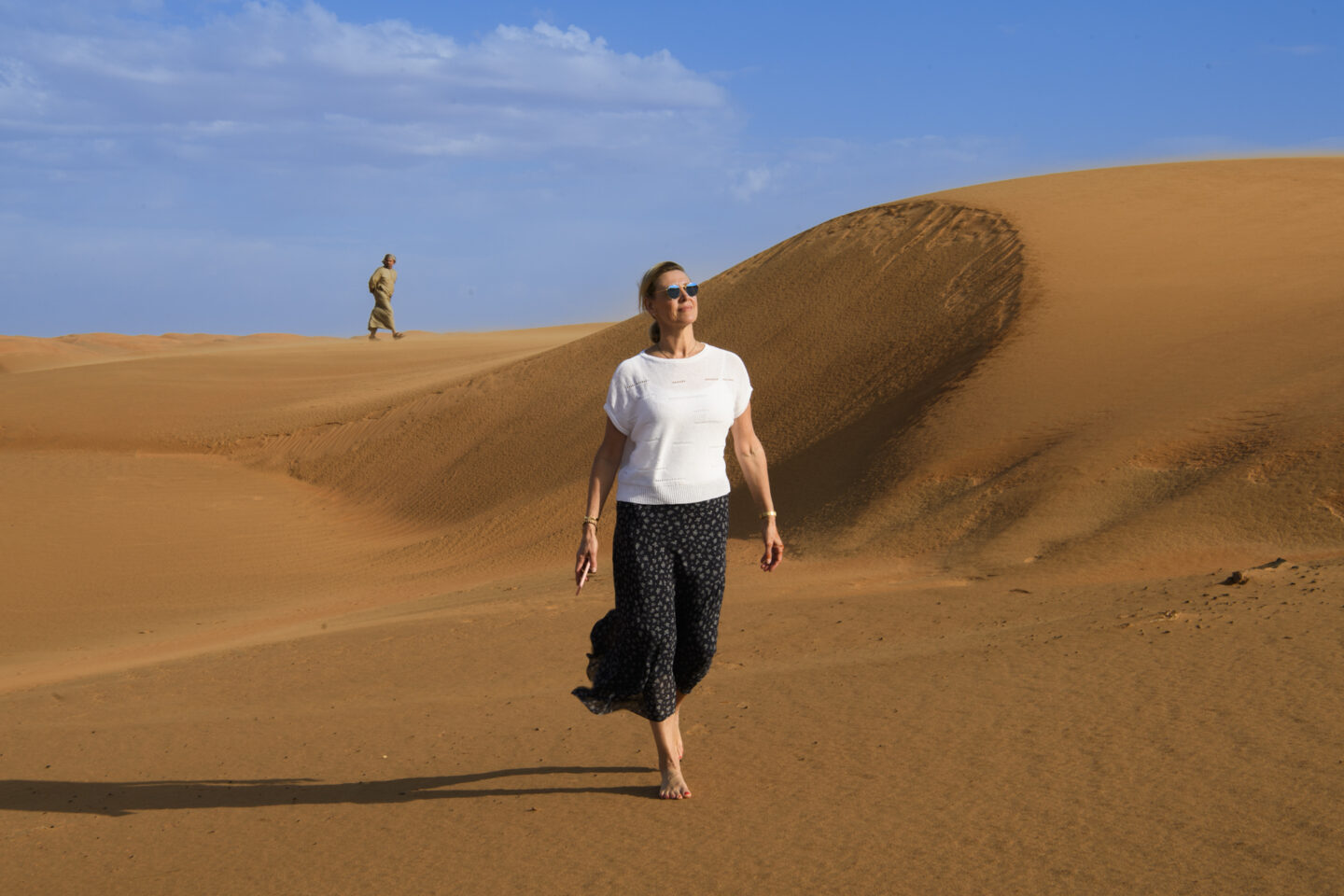
From Muscat to Sur
We leave the capital, Muscat, and head south along the Gulf of Oman. The newly constructed Highway 17 brings us to the fishing villages of Dibab and Bimmah in an hour and a half.
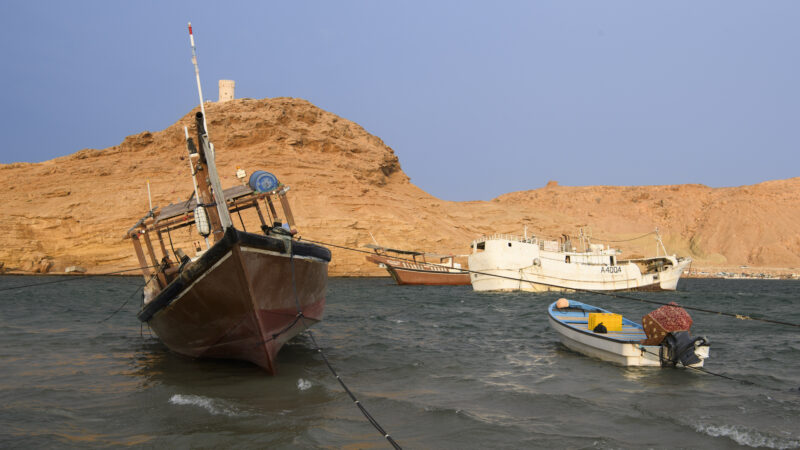
The Bimmah sinkhole
We turn onto the road to Hawiyat Najm Park, even as the wide beach and azure sea beckon, and arrive at the sunken crater or sinkhole of Bimmah. The sinkhole was created by the natural erosion of limestone by underground flowing water which caused the roof to collapse. Fresh water mixed with salt water, giving it an azure color. The crater itself measures 50 by 70 meters and a staircase leads down to the water's edge. You can swim in the fresh water and even dive to a depth of 20 meters.
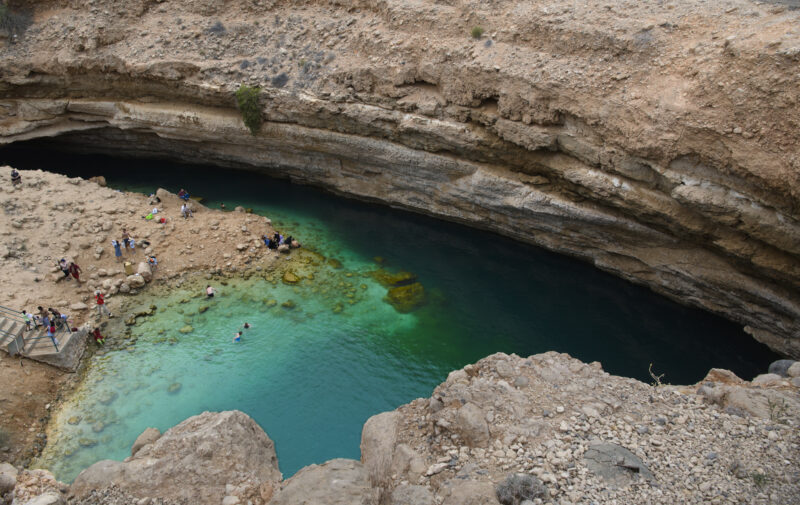
Wadi Shab
Next stop is the beautiful Wadi Shab, an enclosed river gorge with swaying palm trees, flowing mountain water and clear azure pools. The wadi is the perfect place to take magnificent hikes through the rugged gorge and enjoy a picnic with the locals. If you want to swim, remember to wear shorts and a T-shirt and respect the local culture. A walk through the wadi and back can easily take 2 hours. Bring plenty of water and a snack.
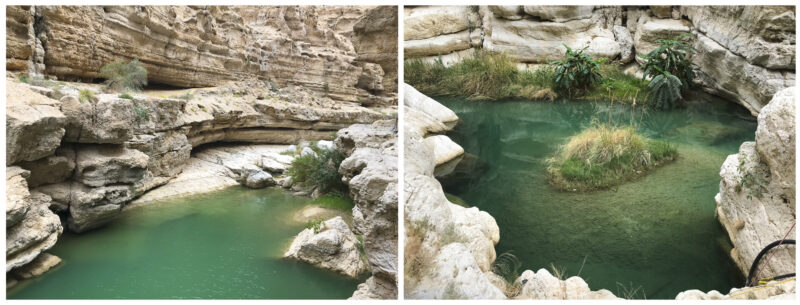
Sur
The port city of Sur was once a powerful and important center for trade with East Africa, India and other overseas territories. Large wooden ships, called dhows, were traditionally built here from teak. The ships sailed across the Indian Ocean and the Persian Gulf, carrying slaves, goods and valuables. After centuries of prosperity and wealth, the boom came to an end when the British government banned the slave trade in the mid-19th century. Soon after, the Empire of Oman and Zanzibar split into two separate sultanates. The downward trend continued with the construction of the Suez Canal.
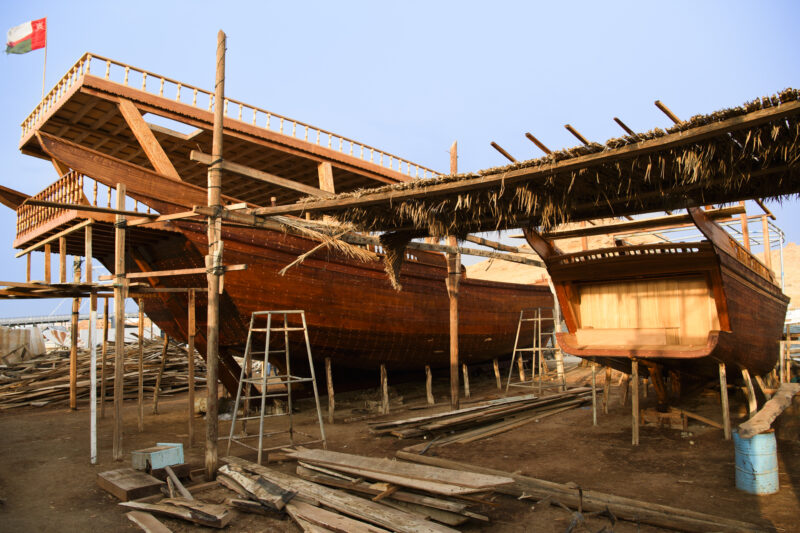
Sur is still the most important city on the north coast of Oman after Muscat. Here you can still admire the construction of the beautiful wooden dhows in a few remaining small shipyards. After our visit, we drive to Al Ayja, a district separated from the rest of Sur by a creek. The creek connects the Bay of Sur with the Gulf of Oman. From the shore we enjoy the beautiful view of the old watchtowers and lighthouse that guard the entrance to the bay.
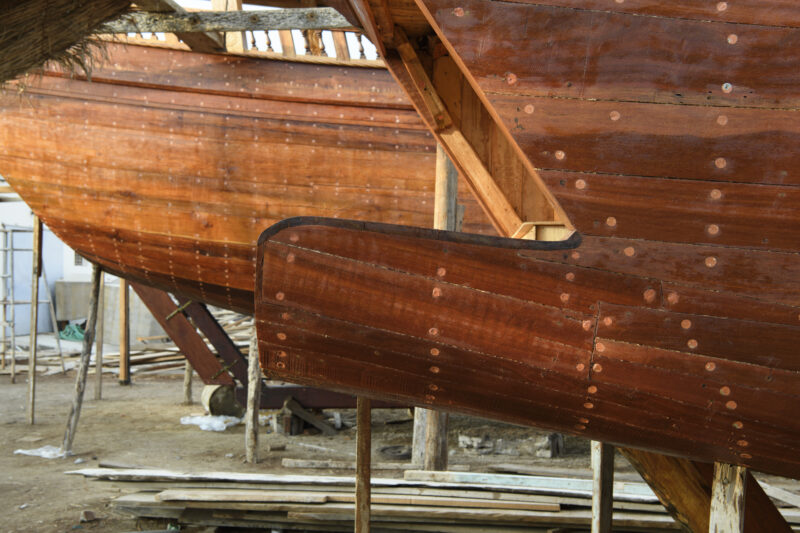
Wahiba Sands
We head into the desert and arrive at Wahiba Sands in the late afternoon. The area is officially called Sharqiyah Sands, but is better known as Wahiba Sands, named after the local Bedouin tribe, Bani Wahiba. The vast sandy desert is the most beautiful desert area in Oman. It covers an area of 180 km long and 80 km wide and is still inhabited by the nomadic Bedouin.
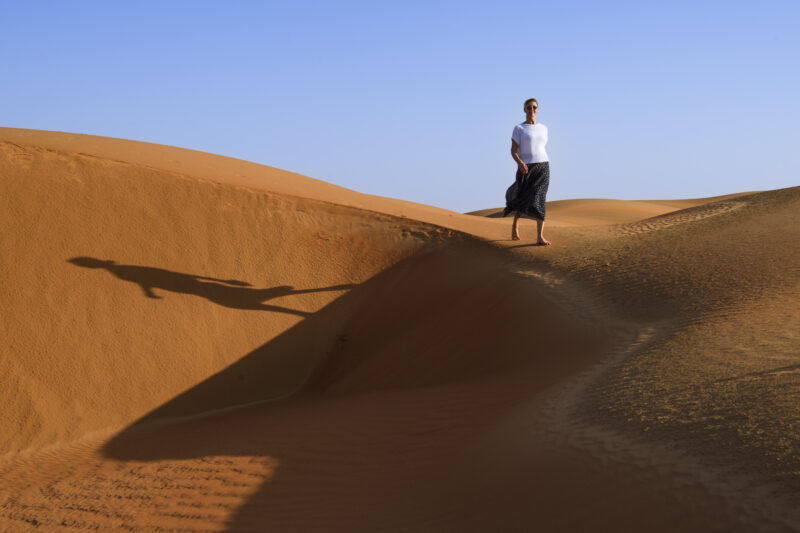
The heat of the day is over, and we set out to explore. We enjoy endless views and a magical sunset over the orange-red dunes with our feet in the soft warm sand. Tomorrow will be a fun-filled day. We will go dune bashing and visit a Bedouin family.
What you need to know before going to Wahiba Sands
The sand desert is an awe-inspiring but dangerous area that can only be explored with an experienced guide and a four-wheel-drive vehicle. Do not attempt to enter the dunes alone. Make sure you have enough water and a snack and wear appropriate footwear.
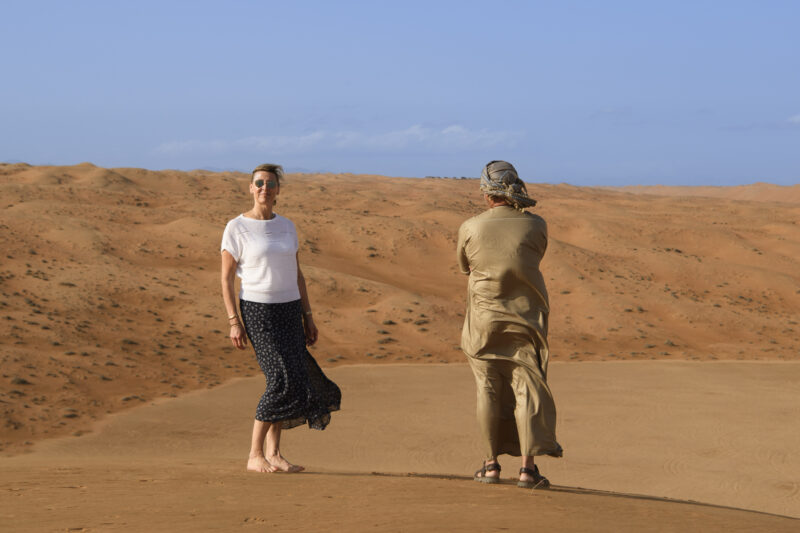
Spend the night at Wahiba Sands
Spending the night in this beautiful part of the desert is quite an experience. The days are hot and the nights cool. During our stay there was even a spectacular thunderstorm that flooded several tents, but the next morning the sun was shining again.
There are many different camps to stay in. We chose the stylish Desert Nights Camp and slept in a spacious traditional tented villa.
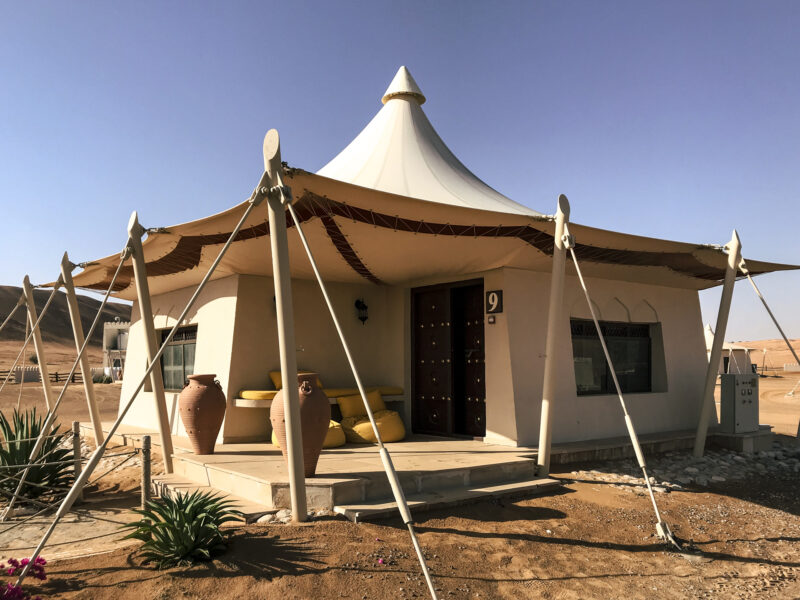
Exploring the Wahiba Sands
A visit to the Wahiba Sands is a highlight of any tour in Oman. The stunning sand dunes are not only beautiful to look at, they are the perfect backdrop for fun and adventure.
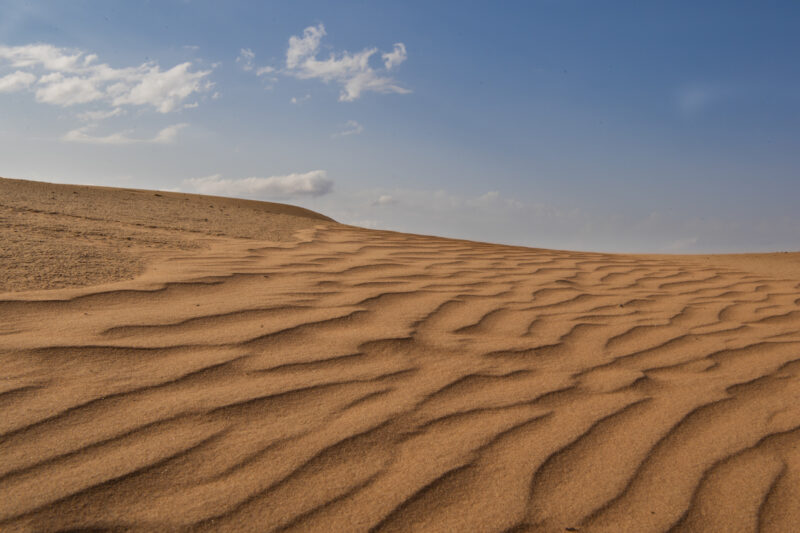
Dune bashing
Dune bashing is driving a 4x4 vehicle at high speed through the sand dunes. It is a real adventure and not without risks. You should only do this with an experienced driver who respects the safety rules. Kamil is very experienced in dune bashing and to the rhythm of oriental music we enjoy an unforgettable and exciting ride.
Camel ride
The various desert camps offer camel rides into the dunes. Riding a camel takes some getting used to, especially if there are two of you. Camels are very gentle, friendly and curious animals. I had a lot of fun with them.
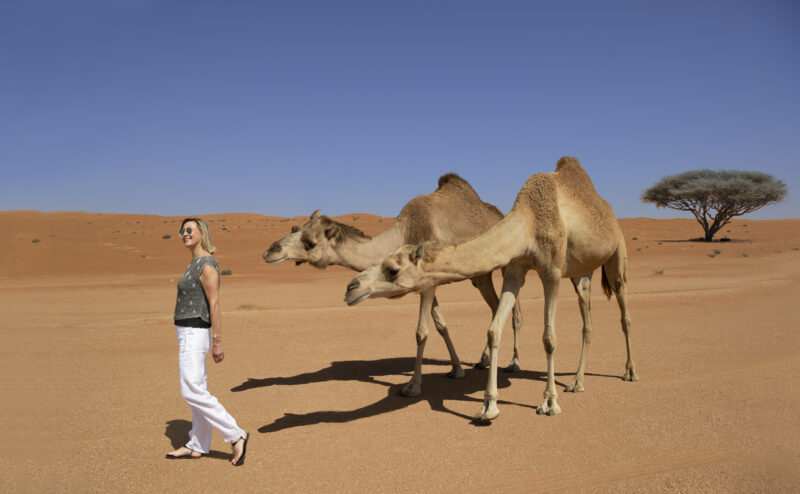
Visiting a Bedouin family
When our guide, Kamil, suggests that we visit a Bedouin family, I get all excited. Before we arrive, he gives us a few tips on Bedouin etiquette.
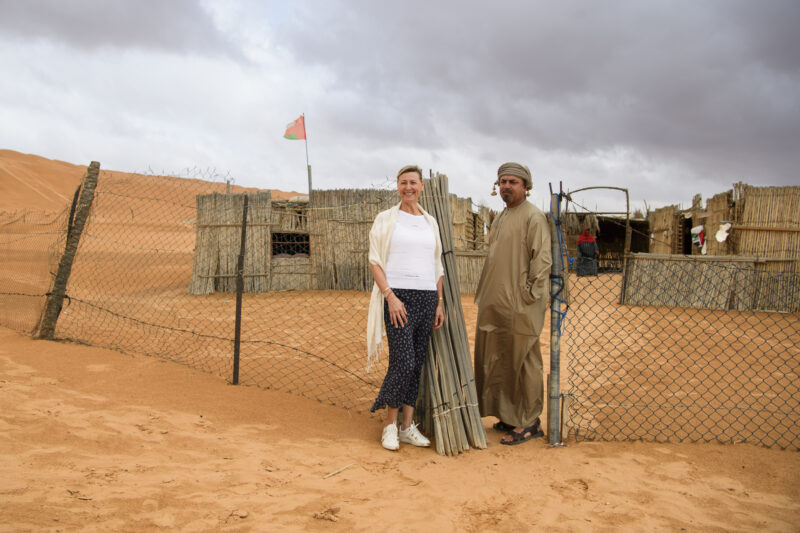
We enter a semi-permanent structure made of dried palm leaves and are warmly welcomed by two women. The room, covered with rugs and cushions, is used as a dining area and a reception hall. As we sit down, we cross our legs or tuck them under. It is very rude to stretch your legs forward or point your toes at anyone, especially your host. Hospitality is one of the Bedouin's most important values, and any stranger who passes by is welcome. According to tradition, a traveler can stay with them for 3 days without having to explain why. Then it is time to leave.
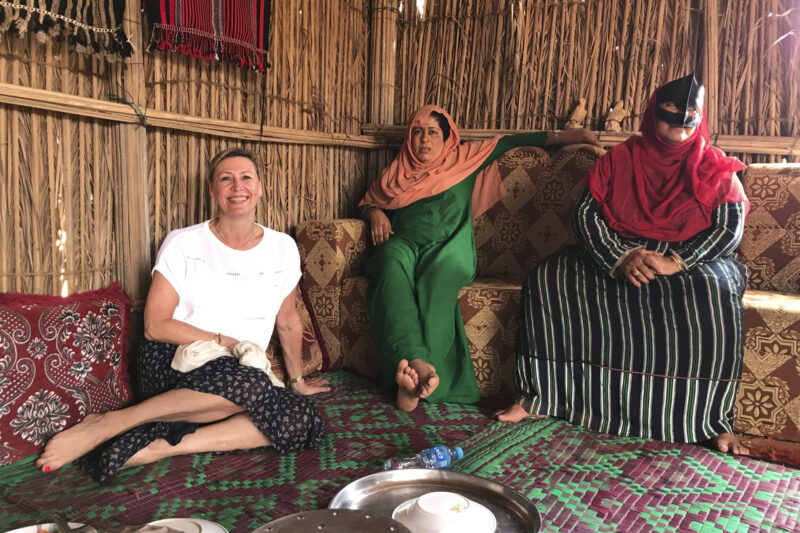
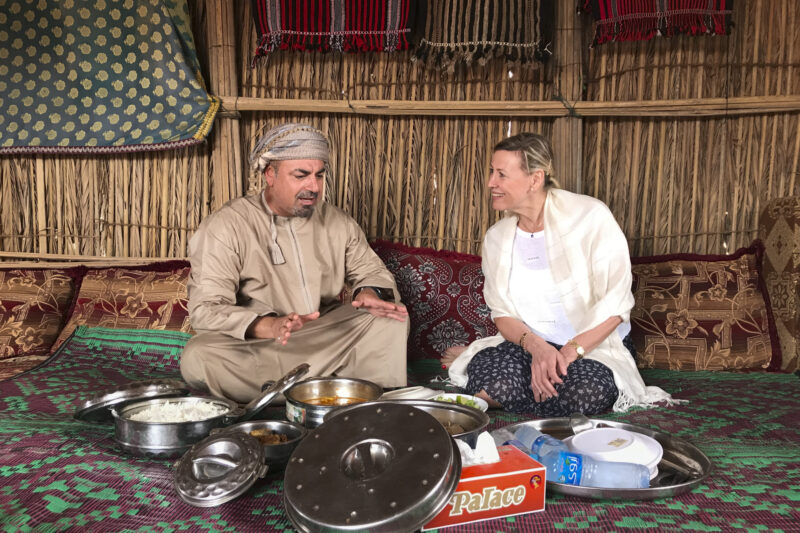
We enjoy a delicious traditional meal of rice, flat bread, dried fish and stewed chicken in a spicy broth with tomatoes. After lunch, Didier shares his passion for photography with the children and I have my hands decorated with floral henna designs.
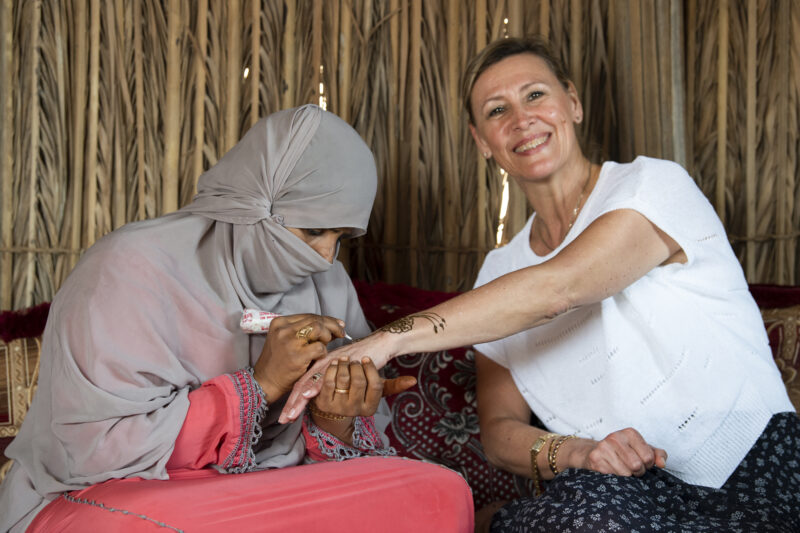
The Bedouin are a truly friendly people. Respect their customs and thank them for making you feel welcome. The women make small items such as bracelets, pouches of local wool, and small jars of eyeliner. It is customary to buy a small souvenir. Don't think that the Bedouin are not keeping up with the times. They use cell phones and 4X4 vehicles just like we do. They have embraced the modern world without losing any of their authentic values and customs.
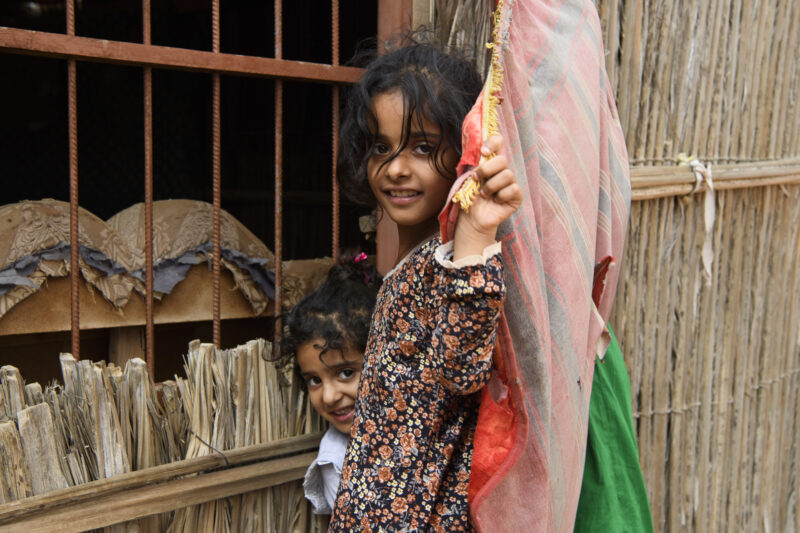
Musandam Peninsula
In the far north of Oman, on the strategic Strait of Hormuz, lies Musandam, a peninsula cut off from the rest of Oman by the UAE. Musandam can be reached by road from Dubai or Abu Dhabi.
The sparsely populated Musandam Peninsula consists of rugged, steep mountains and spectacular fjords with hidden fishing villages. In the south, the rocky coastline is dotted with beautiful sandy beaches. It was there that we stayed at the remote spa hotel Six Senses Zighy Bay.
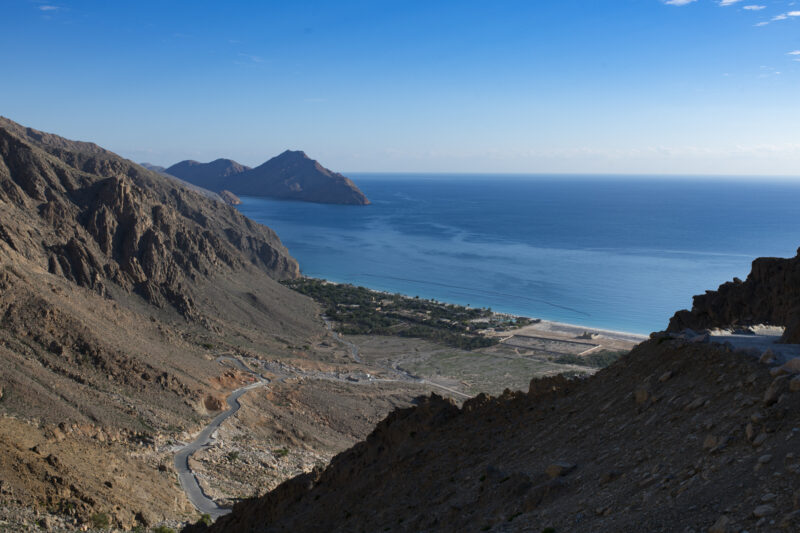
The romantic Six Senses resort is nestled between high limestone mountains and a wide beach of fine golden sand. The villas and guest areas are built and decorated in local style. Six Senses is synonymous with pampering. Relax on the sun-drenched beach and swim in the blue waters. At the luxurious spa, enjoy the traditional hammam, personalized wellness programs and massages, or join a yoga class.
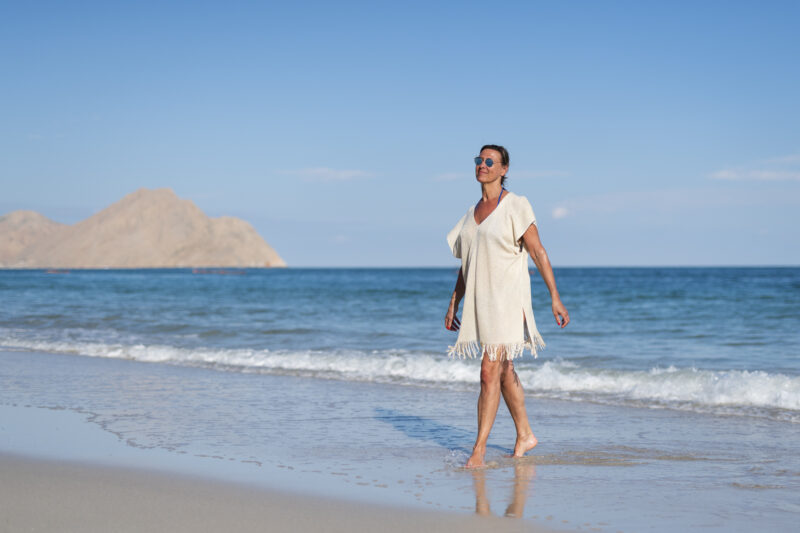
Six Senses is also foodie heaven. From traditional dishes to international fusion or sophisticated French cuisine, the choice is yours. A traditional Arabic shuwa feast, where large pieces of spiced lamb are cooked in a charcoal pit for hours, is held weekly on the beach. You may be in the mood for a trip out to sea on an authentic wooden dhow after so much rest and food. You can also explore the nearby fishing village. Or you can go scuba diving in search of sea turtles. I became friends with Anoop, one of the chefs at the hotel. He taught me how to prepare many Omani and South Indian dishes.

In search of deep canyons, deserted mountain villages and green oases, we head inland into the Hajar Mountains. Read all about it in my blog
The ultimate tour of Oman: Hajar Mountains